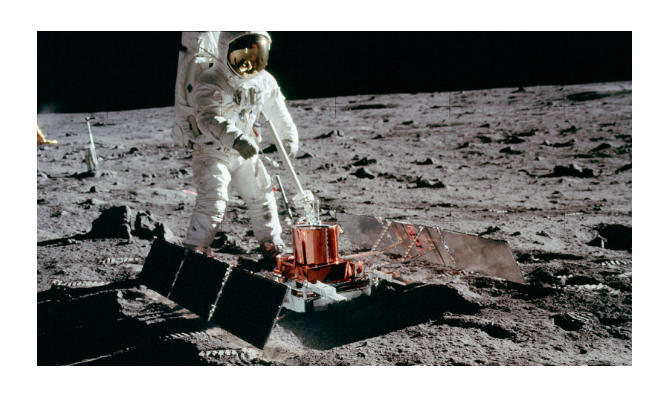We Need Scientists Back on the Moon

16th of July 2019 will mark 50 years since Neil Armstrong and Buzz Aldrin became the first humans to walk on the surface of the moon. 14th December 2018 marked 46 years since Eugene Cernan, the last man on the moon, departed with the crew of Apollo 17 on their five-day journey back to Earth. In the three-and-a-half-year period between these events, a total of 12 people set foot on the lunar surface over the course of six manned missions.
The first ‘giant leap’ by Apollo 11 was watched by millions all around the world and is still widely regarded as one of mankind’s greatest achievements. This event is often framed in history books and across popular media as a landmark of political significance. Soviet-American rivalry was certainly the primary reason for financial investment in NASA’s efforts and, shortly after this victory, the funds began to dwindle. Proposals for further investment fell out of favour with Americans as they felt there was not much more to be achieved. Although the lunar landings were themselves one of the most breath-taking feats of engineering in human history, one under-appreciated element of these missions is the scientific legacy of Apollo. Just as Charles Darwin’s voyages aboard H.M.S. Beagle and the radical insights he gained are not celebrated as an accomplishment of British colonialism, neither should the Apollo missions be remembered merely as America’s great technological triumph of the Cold War.
During the six successful surface landings, 12 astronauts spent a cumulative time of 12.5 days on the ground, covering a total distance of 95.5 kilometres (the vast majority of this was made possible by introduction of the Lunar Roving Vehicle during Apollo 15). Even in this remarkably brief period, the Apollo crews did more than just plant flags, conducting a variety of complex research tasks which were not only unprecedented at the time but are of continued significance to lunar and planetary science to this day.
The missions saw the return of 382 kilograms of rock samples from a variety of locations across the lunar surface. These samples continue to be analysed in university departments around the world. The most significant results of these analyses are that by dating the samples from different sites, they provide vital clues about the rate of cratering on the moon’s surface. These estimates are not only helpful for understanding the collisional history of the moon — they can be used to predict the histories of other solar system bodies, such as Mercury, Mars, and the rocky moons of the gas giants. The abundant rock sampling carried out by Apollo sheds light on the origin of the moon itself, believed to have been formed by the collision of a small Mars-sized planetesimal with the young Earth1. Of course, this evidence is valuable for more than just providing insight into our local planetary system, since it allows us to extrapolate to the wider universe and produce theories to explain planetary formation in star systems far beyond our own. The extraordinarily broad range of samples collected by the manned lunar missions has lent credence to some theories that would be impossible without the immensely efficient scientific work of the Apollo astronauts.
Besides accumulating an extraordinary number of rock samples, the Apollo crews also built and used a wide variety of scientific instruments on the lunar surface, some of which continue to be used in modern research. One example is the planting of several mirrors, which have been used to measure the distance between the moon and the Earth by aiming powerful Earth-based lasers at them and measuring the time between firing the pulse and registering the reflected signal on Earth. Another important endeavour was the Passive Seismic Experiment, where a seismometer was placed on the moon’s surface in order to detect ‘moonquakes’, providing crucial information about the moon’s internal structure and meteorite impacts2.
Although no manned missions have taken place on the moon since 1972, there have been intermittent efforts to send probes and orbital satellites to the rocky body, with mixed success. Some observational missions have used remote sensing techniques to study the moon’s surface from orbit, with the effectiveness of measurements relying heavily on calibrations from original Apollo instruments3.
Most recently, the Chinese probe Chang’e 4 landed its rover on the far side of the moon in January 20194. This was the first time in history that any space agency has successfully landed on this side of the moon, which is completely unexplored at surface-level and is of particular interest to scientists given its denser population of deep impact craters compared to the side we see at night. Planetary scientists are keen to investigate the Aitken basin, where the Chang’e 4 rover has been deployed. It is the moon’s oldest and largest impact crater, and dating the age of the basin could improve estimates of the period of late heavy bombardment when the moon and inner planets of the solar system underwent a very rapid rate of collisions for a seemingly brief period of time. It was very close to this time that life first emerged on Earth, and extensive volcanic activity has since caused the Earth’s surface to renew constantly; this has covered up most of the evidence of past collisions. Therefore, harvesting the abundant crater data on the far side of the moon could allow scientists to predict more accurately what role asteroid impacts played in the emergence of life on the Earth. Another goal of the Chinese mission was to investigate the effects of the moon’s weak gravitational force on living organisms. At first, small cotton plants successfully sprouted on-board the landing module, becoming the first plants ever to sprout on the surface of another world. Sadly, the cotton plants quickly met their demise at the hands of the cold lunar night, but Chinese space officials have yet to reveal the fate of other organisms on-board the probe, including potato seeds and fruit-fly eggs5.
In February 2019, fans of space exploration around the world mourned the loss of NASA’s first Mars rover, Opportunity, after 15 years of gruelling transit across the surface of the Red Planet6. At this time, it is worth considering what scientific progress might be achieved by a manned mission to Mars, given the remarkable success and efficiency of the Apollo astronauts half a century ago.
In a timely announcement, NASA revealed last month that it intends to send humans to the moon once again, with plans to land an unmanned vehicle by 2024 and the hope of having astronauts touch down once again on the lunar surface as early as 2028. The aim, according to NASA, is not only to land on the moon but to build a small space station, providing a solid base for lunar operations and a permanent environment for more complex experiments. The benefits of having a permanent headquarters from which to operate will allow for future astronauts to do more than merely scratch the surface of our rocky companion. It is hoped future ‘giant leaps’ to the moon will see it used as a springboard towards Mars and beyond.
In a statement, NASA’s administrator Jim Bridenstine said, “This time, when we go to the moon, we’re actually going to stay. We’re not going to leave flags and footprints and then come home to not go back for another 50 years.”7
This article was specialist edited by Madeline Pritchard and copy-edited by Laura Kane.
References
- https://the-gist.org/2018/04/how-to-make-a-moon/
- https://moon.nasa.gov/resources/13/apollo-11-seismic-experiment/
- https://arxiv.org/pdf/1211.6768.pdf
- https://www.theguardian.com/science/2019/jan/03/china-probe-change-4-land-far-side-moon-basin-crater
- https://www.space.com/43025-china-moon-mission-plants-dead.html
- https://economictimes.indiatimes.com/magazines/panache/nasa-bids-farewell-to-opportunity-a-peek-into-the-robots-14-year-long-journey-on-mars/adieu-opportunity/slideshow/68105488.cms
- https://phys.org/news/2019-02-nasa-moon.html#jCp










